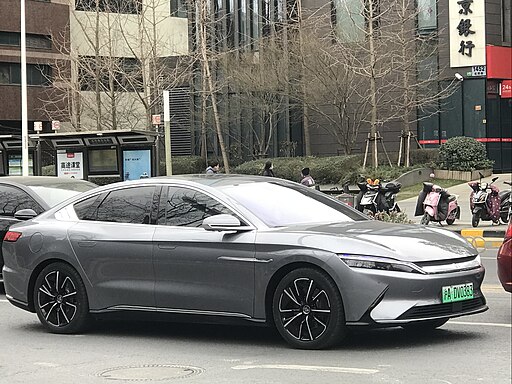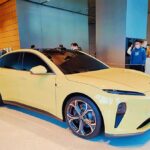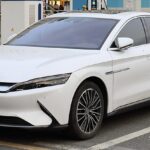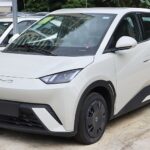BYD Tang EV vs. NIO ES6: A Battle of Performance, Intelligent Driving, and Battery Safety
In the realm of mid-to-high-end pure electric SUVs, the 2021 BYD Tang EV and NIO ES6 stand out as two prominent contenders. Many consumers are impressed by the electric cars’ remarkable acceleration capabilities, which has become a decisive factor for some in choosing electric vehicles. Let’s compare the two models head-to-head in terms of dynamic performance, intelligent driving features, and battery safety to determine who reigns supreme.
1. Dynamic Performance
The BYD Tang EV boasts a power output of 517 horsepower and a motor power of 380KW, with a 0-100km/h acceleration time of 4.4 seconds. On the other hand, the NIO ES6 offers a higher power output of 544 horsepower and a motor power of 400KW, but its 0-100km/h acceleration time is slightly slower at 4.7 seconds. Although the NIO ES6 has a more robust powertrain on paper, the actual acceleration performance tells a different story.
Through short-distance acceleration tests, it becomes evident that the 2021 BYD Tang EV exhibits a clear advantage in acceleration. Right from the beginning of the test, the BYD Tang EV establishes a lead, thanks to its high-performance IMOSFET module, which controls the motor power output more effectively. Additionally, the Tang EV’s use of two more efficient permanent magnet synchronous motors ensures no decline in performance during the latter stages of the acceleration, ultimately securing victory over the NIO ES6. Despite having greater total power, NIO’s performance lags due to limitations in its electronic control system, resulting in a technical setback.
2. Driving Range
Both cars boast NEDC ranges of over 500 kilometers, making them ideal choices for electric vehicle owners, especially during the cold winter season when electric range can be significantly affected. To put their ranges to the test, we conducted a 102-kilometer city expressway drive starting from the Fifth Ring Road in Beijing, circling the city’s loop. The NIO ES6’s range dropped from 294 kilometers to 145 kilometers, with a power consumption rate of 22.2 kWh/100 kilometers. Factoring in this power consumption, the NIO ES6’s full electric range stands at 450 kilometers. Conversely, the 2021 BYD Tang EV’s range decreased from 359 kilometers to 250 kilometers, with a power consumption rate of 17.24 kWh/100 kilometers, resulting in a full electric range of 501 kilometers under similar conditions.
Notably, NIO cars feature battery-swapping technology, a service that many NIO owners take pride in. However, the confidence of the 2021 BYD Tang EV in terms of both range and charging efficiency stems from its upgraded blade battery. While NIO ES6’s ternary lithium batteries outperform in winter battery degradation, BYD’s blade battery efficiently manages low-temperature impacts. The latest blade battery exhibits the thermal stability of lithium iron phosphate batteries and passes the most rigorous nail penetration test in the field of power batteries, remaining free from smoke and fire. In contrast, ternary lithium batteries often reach surface temperatures exceeding 500°C during the same test, leading to intense combustion. This showcases the 2021 BYD Tang EV’s superior core competitiveness within its class.
3. Driving Experience
Contrary to expectations, the 2021 BYD Tang EV doesn’t deliver an overly aggressive driving experience. With ample power, the vehicle satisfies daily travel needs in ECO mode. The steering wheel offers moderate resistance and linear feedback, providing good traction during high-speed lane changes and cornering. The suspension tuning of the Tang EV strikes an excellent balance, effectively filtering out road vibrations and bumps while offering clear road feedback. Through meticulous tuning, the vehicle exhibits minimal bounce even during significant disturbances, resulting in an overall impressive driving experience that also prioritizes passenger comfort.
4. Intelligent Driving Features
The 2021 BYD Tang EV excels in intelligent driving, equipped with the DiPilot intelligent driving assistance system, featuring 10 additional intelligent driving configurations compared to the NIO ES6. This system constantly monitors road conditions, promptly detects and warns of potential issues, and assists in resolving them, maximally ensuring the safety of drivers, passengers, and pedestrians.
Conversely, the NIO ES6 also impresses with its powerful acceleration, providing a satisfying experience for drivers. Equipped with air suspension and CDC dynamic damping adjustment, the ES6 filters road vibrations effectively. However, the overall tuning of the air suspension leans toward the firmer side, which may not be as friendly for passengers considering it’s a family-oriented SUV.
5. Conclusion
Both the 2021 BYD Tang EV and NIO ES6 have their strengths and weaknesses. The BYD Tang EV outperforms in acceleration and battery safety, thanks to its blade battery technology and excellent motor control. On the other hand, the NIO ES6 impresses with its dynamic acceleration capabilities and intelligent driving features. Ultimately, the choice between the two models will depend on individual preferences and priorities – be it raw performance or intelligent driving prowess.





